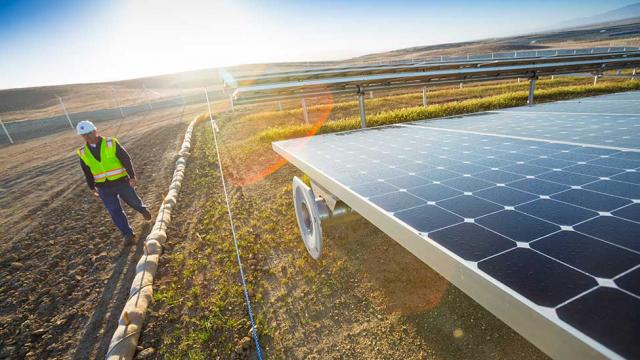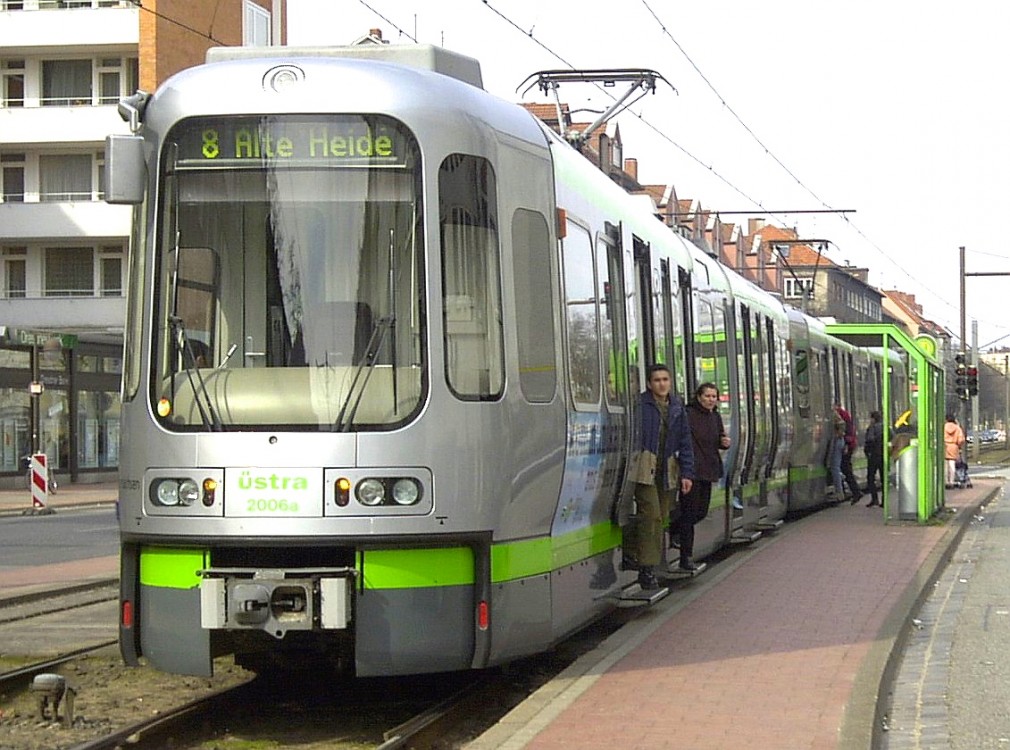
Electrified Rail offers one of the best options to provide transportation powered by renewable energy. This meets one of the largest challenges to transitioning from fossil fuels: clean mobility. The following is an except from an upcoming paper on Solutionary Rail, a Backbone Campaign effort to promote renewable-powered electrified rail for freight and passengers. It explores the tremendous carbon pollution reductions offered by shifting freight from trucks to trains. Solutionary Rail will be the focus of several upcoming events, a teach-in this coming Saturday, Feb. 21 in Seattle, and two Future of Rail conferences cosponsored by Backbone and Railroad Workers United In Olympia, Wa., and Richmond, Calif.
The world needs to back out of fossil fuels more quickly than is generally acknowledged. In order to stem global warming and avert climate disruption challenging the stability of civilization and nature, humanity must hold total global warming to the peak seen since the last ice age, just a little over 1°C, rather than the 2°C often cited, with no more than 0.4° C additional warming above what the world has already experienced.
Holding this line entails reducing atmospheric carbon dioxide levels to 350 parts per million or less, the point at which the planet stops accumulating solar heat, by 2100. This requires annual carbon pollution reductions of just over 6% immediately. Such deep carbon pollution cuts demand transformatory efforts in all areas of energy generation and use.
Fortunately, the solutions are emerging just in time. The electrical sector today is experiencing rapid drops in the cost of carbon-free renewable generation. “Solar and Wind Energy Start to Win on Price vs. Conventional Fuels,” the New York Times reported in late 2014. “The cost of providing electricity from wind and solar power plants has plummeted over the last five years, so much so that in some markets renewable generation is now cheaper than coal or natural gas,” the Times noted. Solar energy will be competitive with power-grid-supplied electricity in at least two-thirds of the global market, and up to 80 percent, by 2017, Deutsche Bank projects.
The prospect for an economy substantially or even completely run on renewable energy, a few years ago dismissed as the realm of dreamers, is moving into reality. The Solutions Project has developed scenarios for a 100% renewables energy supply. It is a fact in many localities already. Thus most of the carbon pollution depicted on the accompanying U.S. Environmental Protection Administration chart can be eliminated. The electrical grid, commercial and residential buildings and industrial processes can be transitioned to carbon-free energy sources. Many agricultural processes, such as the manufacturing of nitrogen fertilizer and crop drying, currently mostly done using natural gas, can be performed carbon-free using wind and solar energy.
The greatest challenge in moving to a fully renewable energy supply is transportation, source of 28 percent of U.S. carbon emissions. The world’s vehicles run 95 percent on petroleum. This is despite many years of subsidies for biofuels, which have come under scrutiny as competitors for other uses of the land such as food, timber and carbon storage. Advocates and critics alike have agreed on frameworks in which biofuels can be sustainably produced, such as from waste materials.
At the same time there is growing consensus that sustainable biofuels feedstocks are limited and should be reserved for sectors with no other feasible options such as aviation. Hydrogen, also posed as an alternative vehicle fuel, has been slow to emerge due to factors such as efficiency of production and difficulties in distribution and storage on board vehicles.
These challenges combined with solar and wind trends point to electrification with renewable energy as the primary low-carbon option to replace oil-powered vehicles. U.S. electric vehicle sales more than doubled to nearly 120,000 in 2014, from 53,000 in 2012, and 2015 sales continue to outpace 2014 despite low oil prices. Major initiatives by automakers including Tesla and General Motors are anticipated to continue growing the market with lower costs and extended ranges. Other local electrical passenger transport alternatives include electric bikes, electric delivery trucks, trolleybuses, light rail and heavy rail.
However non-petroleum alternatives for long-distance freight transport providing the 500-mile-plus movements upon which our economy relies are far fewer. Air freight might transition to sustainable biofuels over several decades, while long-haul trucking and barge shipping might be hybridized and also run on sustainable biofuels. But, as mentioned, producing sufficient sustainable feedstocks represents a major challenge. Due to physical limitations of combustion engines, the efficiency with which these modes of transportation use energy will also be more limited than with electric drive, which is inherently more efficient.
For fully electrified long haul freight transportation the railroad, the oldest form of mechanized mass transportation, stands out as the best option for long-haul freight mobility in the 21st century. Today, rail locomotives are responsible for two percent of U.S. transportation carbon emissions, while heavy-duty trucks account for another 19 percent. Shifting a substantial portion of truck freight to rail powered with renewable electricity represents a significant low-carbon transportation solution.
Conventional diesel powered rail already wins hands down for transport efficiency. The Federal Railroad Administration finds, “For all movements, rail fuel efficiency is higher than truck fuel efficiency in terms of ton-miles per gallon. The ratio between rail and truck fuel efficiency indicates how much more fuel efficient rail is in comparison to trucks... rail fuel efficiency varies from 156 to 512 ton-miles per gallon, truck fuel efficiency ranges from 68 to 133 ton-miles per gallon.” At the low end, a unit auto train is 1.9 times more efficient than its truck equivalent, while a double-stack container train can haul freight 5.5 times more efficiently than trucks.
The efficiency advantage rests on basic physics. Steel rolling on steel has about one fifth of the friction of rubber on concrete. Trains, especially double stack container trains, are more efficient aerodynamically than an equivalent number of trucks since one rail car reduces drag for the following car. In addition, trains expend less energy accelerating and decelerating since they stop less often. They also use less energy climbing and descending hills due to reduced and more gradual grades.
Such dramatic savings from shifting trucks to electrified rail means that even if electricity is from modern coal plants, the worst environmental option, carbon pollution reductions will still be substantial. The ability to used renewable energy creates the very real possibility of substantially carbon-free transportation. Electrifying 80 percent of railroad ton-miles and transferring half of current truck freight to rail would take about 1 percent of U.S. electricity. Renewables in the first half of 2014 already supplied 14.3 percent of the nation’s electricity. Wind alone provided five percent. Renewable expansion to run electrified rail is well within reach.
Electrified rail powered by renewables is a low-carbon solution for 21st century freight mobility. Solutionary Rail provides a framework to make it a reality. For more on Solutionary Rail go here.
3 WAYS TO SHOW YOUR SUPPORT
- Log in to post comments















